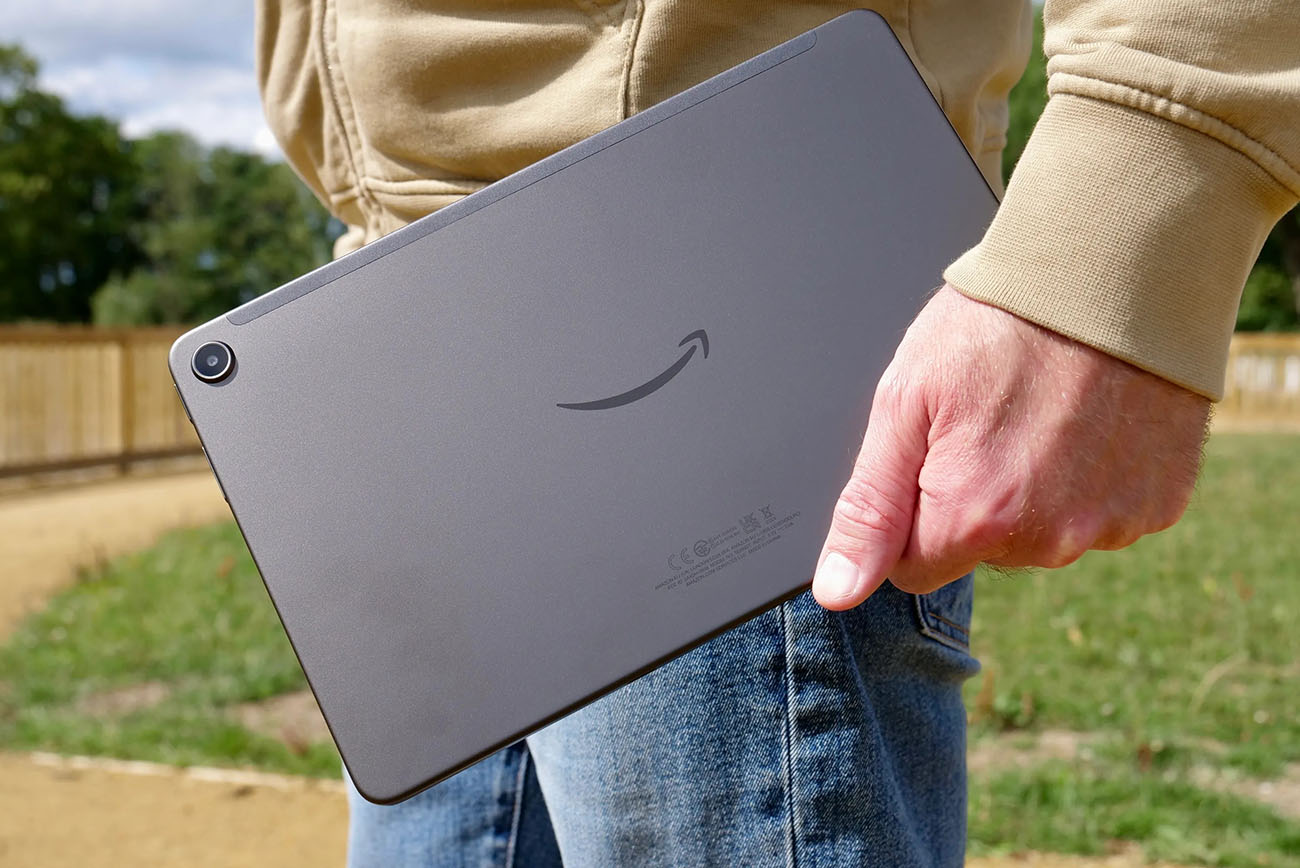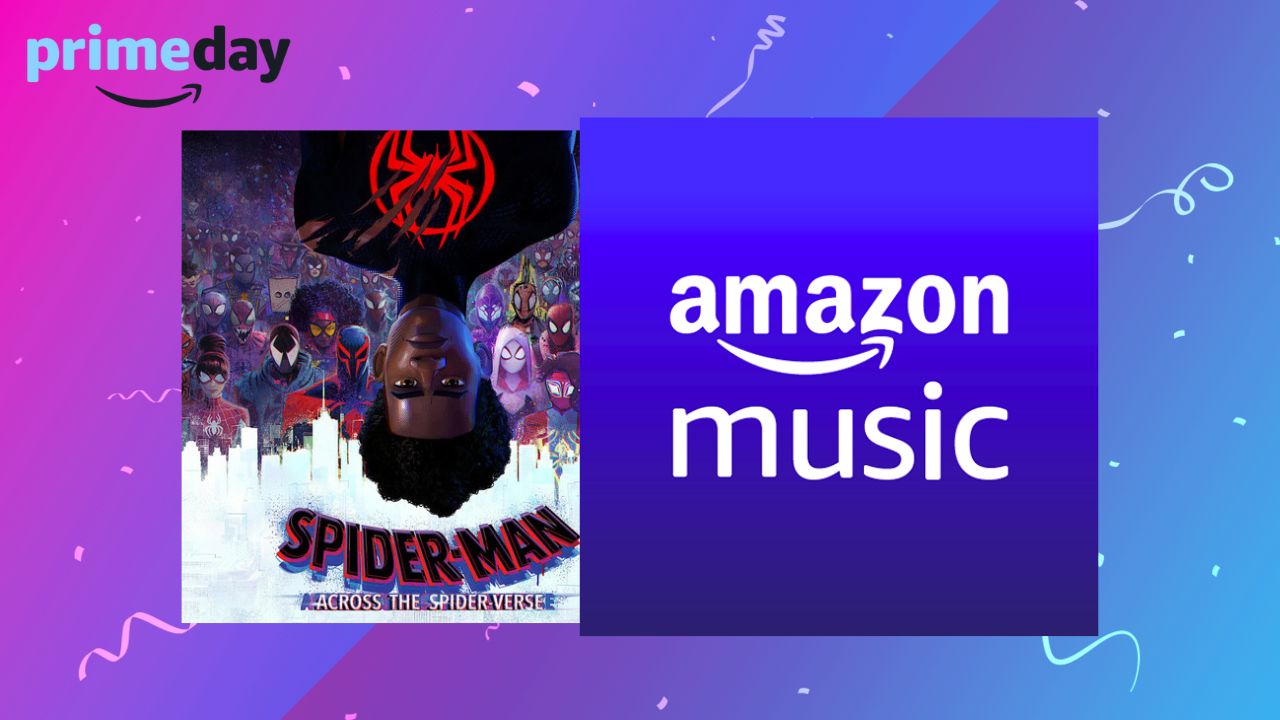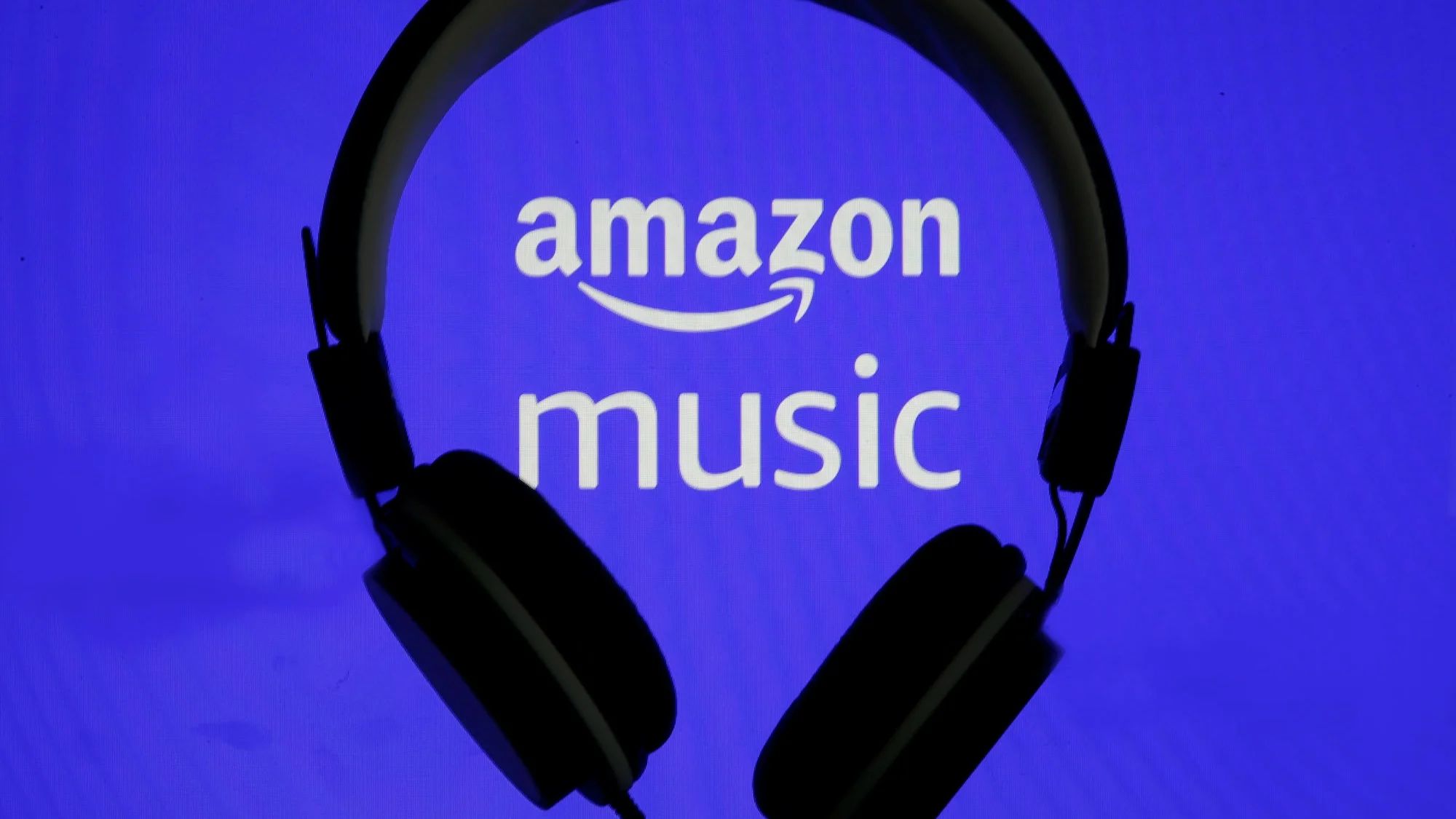Introduction
Amazon Prime is a popular subscription service that offers customers a wide range of benefits, including fast shipping, access to a vast library of streaming content, and exclusive discounts. However, one common complaint among users is that Amazon Prime can sometimes be slow, causing frustration and hindering the overall user experience. In this article, we will explore the various factors that can contribute to the sluggish performance of Amazon Prime and provide some insights into why this issue occurs.
When users encounter slow speeds on Amazon Prime, it can be a source of annoyance and impatience. It is important to understand the underlying causes behind this problem to address it effectively. While Amazon’s technology infrastructure is generally robust, there are several reasons why users may experience slow streaming or delayed loading times.
In the following sections, we will delve into various factors that may contribute to the slow performance of Amazon Prime, including network infrastructure, heavy traffic, internet connection issues, geographical location, bandwidth limitations, server overload, outdated devices, and potential internet service provider (ISP) throttling. By understanding these factors, users can better troubleshoot and optimize their streaming experience on Amazon Prime.
Lack of infrastructure
One of the reasons why Amazon Prime may be slow is the lack of adequate infrastructure in certain areas. While Amazon has invested heavily in building a robust network, there are still areas where the internet infrastructure is not as advanced or well-developed. In such cases, the data may have to travel longer distances, leading to slower speeds and increased latency.
In regions with limited or outdated infrastructure, the internet service providers (ISPs) may struggle to provide high-speed connections, resulting in poor streaming performance on platforms like Amazon Prime. This can be especially problematic during peak usage hours when the network is congested and unable to handle the heavy traffic load.
Moreover, the infrastructure within users’ homes also plays a role in the overall streaming experience. Outdated routers or inadequate Wi-Fi coverage can cause slow speeds and buffering issues. It is crucial to ensure that the network equipment is capable of handling the demands of streaming high-quality content.
In some cases, the lack of infrastructure can also affect the availability of Amazon’s content delivery servers in certain regions. When users request content from Amazon Prime, it needs to be delivered through a network of servers strategically located across the globe. If there are fewer or no servers in a particular region, the content may have to be delivered from a far-off location, leading to longer loading times.
To mitigate the impact of infrastructure limitations, Amazon is constantly expanding its network and partnering with ISPs to improve connectivity and reduce latency. However, it may still take time to address infrastructure challenges in certain areas, which can result in slower speeds for Amazon Prime users.
Heavy traffic
Another factor that can contribute to Amazon Prime being slow is heavy traffic on the platform. Amazon Prime is a popular streaming service, with millions of users accessing it simultaneously. During peak hours or popular events, the server load can increase significantly, leading to slower speeds and buffering issues.
When numerous users are trying to stream content at the same time, the servers hosting Amazon Prime may become overwhelmed, resulting in delays in content delivery. This can cause interruptions and buffering, frustrating users and affecting their streaming experience.
Additionally, heavy traffic can also impact the performance of the internet service providers (ISPs) responsible for delivering content to users’ homes. The increased demand for bandwidth during peak hours can put strain on the network infrastructure, leading to slower overall speeds and degraded streaming quality.
While Amazon has sophisticated algorithms in place to handle high traffic, occasional bottlenecks can still occur, especially during popular events or new content releases. To alleviate the impact of heavy traffic, Amazon continuously invests in expanding their server capacity and optimizing the network to handle increased loads more efficiently.
Users can also help minimize the impact of heavy traffic by adjusting their streaming habits to less popular times, such as early mornings or late evenings. By avoiding peak hours, users may experience faster streaming speeds and smoother playback on Amazon Prime.
Overall, heavy traffic is a common issue faced by popular streaming platforms like Amazon Prime. While Amazon endeavors to provide a seamless streaming experience for all users, occasional slowness during periods of high demand may be inevitable. However, continuous efforts to expand server capacity and optimize network infrastructure help alleviate these issues and provide improved performance.
Internet connection issues
Internet connection issues can significantly affect the speed and performance of Amazon Prime. Even with a fast and stable internet connection, various factors can contribute to interruptions and slow streaming speeds.
One common issue is a weak Wi-Fi signal. If the Wi-Fi router is located far from the device or obstructed by walls or other objects, the signal strength may weaken, leading to slower internet speeds. It is essential to ensure that the device is in close proximity to the router or utilize Wi-Fi range extenders to improve signal strength.
Furthermore, network congestion within the user’s home network can also cause slowdowns. If multiple devices are simultaneously streaming or performing bandwidth-intensive tasks, the available bandwidth is divided among them, resulting in reduced speeds for each device. Users can optimize their streaming experience by prioritizing Amazon Prime on their network or limiting bandwidth usage on other devices.
Another common issue is the use of outdated or incompatible devices. Older devices may not be capable of handling the high-quality streaming content offered by Amazon Prime, leading to buffering and slower load times. Upgrading to newer hardware or using devices specifically designed for media streaming can significantly improve the overall streaming experience.
ISP-related issues can also contribute to slow performance on Amazon Prime. Internet service providers may implement bandwidth throttling, where they intentionally slow down specific types of internet traffic, including streaming services. This can result in reduced speeds and buffering on Amazon Prime. Users can contact their ISP to inquire about any throttling practices and, if necessary, explore alternative ISP options.
Intermittent internet connectivity problems, such as frequent disconnections or unstable connections, can also impact streaming on Amazon Prime. Users may want to troubleshoot their internet connection by restarting the router, checking for firmware updates, or contacting their ISP if the issue persists.
Overall, internet connection issues can significantly hinder the streaming experience on Amazon Prime. By addressing factors such as weak Wi-Fi signals, network congestion, outdated devices, ISP throttling, and intermittent connectivity problems, users can enhance their streaming speeds and enjoy uninterrupted playback on the platform.
Location
The geographical location of users can also have an impact on the speed and performance of Amazon Prime. Streaming services like Amazon Prime have data centers strategically located around the world to optimize content delivery. However, depending on the user’s location, they might be farther away from the nearest data center, leading to slower loading times and buffering.
Users in remote or rural areas may experience slower speeds and degraded streaming quality due to limited internet infrastructure and fewer nearby data centers. The distance data has to travel from the data center to the user’s device can cause latency and delays in content delivery.
In contrast, users in well-connected urban areas or regions with robust internet infrastructure may enjoy faster streaming speeds and smoother playback on Amazon Prime. These areas typically have better network coverage and are closer to data centers, resulting in reduced latency and improved content delivery.
Location can also impact the availability of certain content on Amazon Prime. Due to licensing and copyright restrictions, some shows or movies may be region-restricted, meaning they are only available in specific countries or geographic regions. Users in regions where certain content is restricted may experience limited streaming options compared to users in other locations.
While Amazon continues to expand its global network of data centers to improve streaming performance worldwide, users in certain locations may still face challenges in terms of slower speeds and limited content availability.
Using a virtual private network (VPN) can sometimes help users bypass regional restrictions by masking their IP address and accessing content from different locations. However, it’s important to note that Amazon Prime’s terms of service may prohibit the use of VPNs, and violating these terms can lead to account suspension.
Overall, the location of users can impact the speed, content availability, and overall streaming experience on Amazon Prime. While Amazon strives to provide consistent performance across different regions, limitations in infrastructure and content licensing can still result in variations in the streaming experience depending on the user’s location.
Bandwidth limitations
Bandwidth limitations can significantly affect the streaming experience on Amazon Prime. Bandwidth is the maximum amount of data that can be transferred within a given time frame, and it is a crucial factor in determining the speed and quality of streaming content.
Internet service providers (ISPs) often impose bandwidth limitations on their plans, especially for lower-tier or budget packages. These limitations can restrict the amount of data that can be transferred per second, resulting in slower streaming speeds and lower video quality on platforms like Amazon Prime.
Users who have plans with data caps or lower bandwidth allowances may experience buffering or downgraded video quality when streaming high-definition (HD) or ultra-high-definition (UHD) content. This is because streaming such content requires a higher amount of bandwidth to maintain a smooth playback experience.
In addition to ISP-imposed limitations, shared internet connections can also impact bandwidth availability. In scenarios where multiple devices in a household are concurrently accessing the internet, the available bandwidth is divided among them. This can result in reduced speeds and slower streaming on Amazon Prime.
Bandwidth limitations can be mitigated by opting for higher-tier plans or packages that offer larger bandwidth allowances. Users can check with their ISPs to determine if higher-speed options are available in their area. Additionally, monitoring and managing internet usage within the household can help optimize available bandwidth for streaming purposes.
Amazon Prime offers various streaming quality options, allowing users to adjust video quality to match their available bandwidth. Choosing a lower resolution, such as 720p or standard definition (SD), can help ensure smoother streaming on slower connections or plans with lower bandwidth allowances.
It’s worth noting that bandwidth limitations can vary depending on the time of day. During peak hours, when many users are simultaneously streaming or using the internet, the available bandwidth per user may decrease, resulting in slower speeds on Amazon Prime. Adjusting streaming habits to less congested times can help enhance the overall streaming experience.
By understanding and managing bandwidth limitations, users can optimize their streaming experience on Amazon Prime and enjoy smoother playback with minimal buffering.
Server overload
Server overload is another factor that can contribute to slow performance on Amazon Prime. When the demand for streaming content exceeds the capacity of the servers, it can result in delays in content delivery and buffering issues for users.
Amazon Prime serves millions of users worldwide, and during periods of high demand, such as new content releases or popular events, the servers hosting the platform can become overloaded. This overload can lead to slower speeds and reduced streaming quality.
When the servers are overloaded, it can cause delays in processing user requests, leading to buffering or longer loading times for shows and movies. Since Amazon Prime strives to deliver high-quality streaming experiences, it may prioritize smooth playback by buffering the content to prevent frequent interruptions.
In addition to peak usage periods, server overload can also occur when there are technical issues or maintenance activities being carried out on the servers. These temporary disruptions can result in slower performance and limited access to certain features of Amazon Prime.
To address server overload, Amazon continuously invests in expanding server infrastructure and optimizing server capacity to accommodate increasing user demand. By strategically distributing data centers and implementing load balancing techniques, Amazon aims to evenly distribute user traffic and ensure optimal performance.
Users can also take certain steps to minimize the impact of server overload. For example, choosing to stream content during off-peak hours or avoiding simultaneous streaming on multiple devices can help optimize server resources and improve streaming speeds.
It’s important to note that occasional server overload can happen on any streaming platform, especially during periods of high demand. While Amazon Prime strives to provide a seamless streaming experience, users may still experience intermittent slowness due to server load. However, Amazon’s continuous efforts to upgrade infrastructure and optimize server capacity contribute to overall improved performance and better user experience.
Outdated devices
Using outdated devices can contribute to slow performance on Amazon Prime. As technology evolves and streaming services continue to improve, older devices may struggle to keep up with the demands of high-quality streaming content.
Older devices may have slower processors, insufficient memory, or outdated software, which can lead to buffering, longer loading times, and overall slower streaming speeds on platforms like Amazon Prime.
Additionally, older devices may not support the latest video codecs or streaming protocols, resulting in compatibility issues. This can lead to degraded video quality or incompatibility with certain streaming features offered by Amazon Prime.
Streaming high-definition (HD) or ultra-high-definition (UHD) content requires more processing power and bandwidth than streaming standard definition (SD) content. Older devices may struggle to handle the higher demands of HD or UHD streaming, resulting in decreased performance and slower speeds.
Upgrading to newer devices specifically designed for media streaming, such as smart TVs, streaming boxes, or streaming sticks, can greatly enhance the streaming experience on Amazon Prime. These devices often have more powerful processors, ample memory, and support for the latest video codecs and streaming technologies.
For users who are unable to upgrade their devices, optimizing the settings and configurations can help improve performance. Clearing cache and temporary files, closing unnecessary background applications, and updating the device’s software can make a difference in streaming speed and stability.
It’s also worth noting that device-specific troubleshooting steps provided by Amazon Prime, such as clearing the app cache or reinstalling the app, may help address any performance issues related to outdated devices.
Overall, using outdated devices can significantly impact the streaming experience on Amazon Prime. Upgrading to newer, more capable devices or optimizing settings and configurations can help users ensure smoother playback, faster streaming speeds, and a better overall streaming experience.
ISP Throttling
ISP throttling is a practice where internet service providers intentionally slow down specific types of internet traffic, including streaming services like Amazon Prime. This can result in slower speeds and reduced streaming quality for users.
ISPs may throttle certain types of internet traffic to manage network congestion or to promote their own services. Streaming services consume a significant amount of bandwidth, especially when users are streaming high-definition (HD) or ultra-high-definition (UHD) content on platforms like Amazon Prime.
Throttling can occur during peak usage hours when the ISP’s network is under heavy load. By limiting the bandwidth allocated to streaming services, ISPs can ensure a more equitable distribution of bandwidth among all users on their network.
Users may experience buffering, longer loading times, and lower video quality when their ISP is throttling their connection to Amazon Prime. It can be frustrating for users who expect a seamless streaming experience, especially when paying for a higher-tier internet plan with faster speeds.
While some ISPs have faced criticism for implementing throttling practices, net neutrality regulations in certain regions have prohibited or restricted this practice. However, in areas where net neutrality is not enforced, throttling may still occur.
Users who suspect their ISP is throttling their connection to Amazon Prime can perform a speed test at different times of the day using online tools. If the speed test consistently shows slower speeds specifically when streaming on Amazon Prime, it may indicate that throttling is taking place.
To address ISP throttling, users can contact their ISP to inquire about their policies on throttling and express their concerns. If throttling is confirmed, users may consider switching to an ISP that does not engage in this practice or upgrading to a higher-tier plan that may be exempt from throttling.
VPNs (Virtual Private Networks) can also be used to bypass ISP throttling. By encrypting internet traffic and masking the user’s IP address, VPNs can help prevent ISPs from identifying and throttling specific types of internet traffic, including streaming services like Amazon Prime. However, it’s important to note that using a VPN to bypass throttling may violate Amazon Prime’s terms of service and result in account suspension.
Overall, ISP throttling can significantly impact the streaming experience on Amazon Prime by slowing down speeds, causing buffering, and reducing video quality. Users should be aware of their ISP’s policies and explore alternatives to mitigate the effects of throttling.
Conclusion
In this article, we have explored several factors that can contribute to the slow performance of Amazon Prime. From infrastructure limitations to heavy traffic, internet connection issues, location, bandwidth limitations, server overload, outdated devices, and ISP throttling, there are various reasons why users may experience sluggish streaming speeds and buffering on the platform.
Users may encounter slow performance due to the lack of adequate infrastructure in certain areas, causing data to travel longer distances and resulting in slower speeds. Heavy traffic during peak usage hours or popular events can also overload servers and lead to slower content delivery. Internet connection issues, such as weak Wi-Fi signals, network congestion, or outdated devices, can impact streaming speeds and overall performance. Additionally, the user’s geographical location can affect both the availability of content and the distance data must travel, leading to slower loading times.
Furthermore, bandwidth limitations imposed by ISPs can restrict the amount of data that can be transferred, causing slower speeds and reduced streaming quality. Server overload during periods of high demand and occasional technical issues can also contribute to slower performance on Amazon Prime. Lastly, using outdated devices or being subjected to ISP throttling can significantly impact the streaming experience on the platform.
While these factors can often cause frustration, it’s important to note that Amazon continuously invests in enhancing its infrastructure, expanding server capacity, and optimizing its network to provide a better streaming experience. Users can also take steps to enhance their streaming experience, such as upgrading devices, optimizing internet connections, adjusting streaming habits, and staying informed about their ISP’s policies.
Understanding these factors and taking appropriate action can help users address slow performance issues on Amazon Prime, ultimately allowing them to enjoy uninterrupted streaming and a more satisfying overall viewing experience.
















![How To Download Music Safe and Fast [GUIDE]](https://robots.net/wp-content/uploads/2022/04/how-to-download-music-featured-300x175.jpg)








